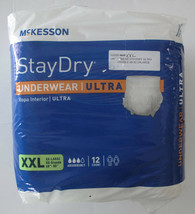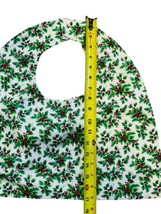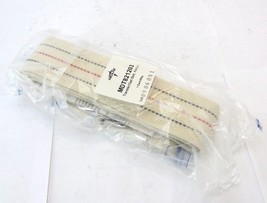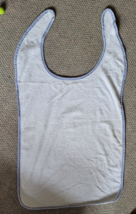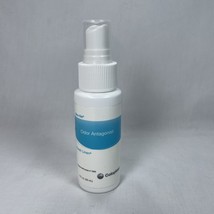Baxter normal saline 0.9% 500ml bags sealed and 48 similar items
Baxter normal saline 0.9% 500ml bags sealed sterile 3/26 IV hydration
$26.00
View full item details »
Shipping options
Return policy
Purchase protection
Payment options
PayPal accepted
PayPal Credit accepted
Venmo accepted
PayPal, MasterCard, Visa, Discover, and American Express accepted
Maestro accepted
Amazon Pay accepted
Nuvei accepted
View full item details »
Shipping options
Return policy
Purchase protection
Payment options
PayPal accepted
PayPal Credit accepted
Venmo accepted
PayPal, MasterCard, Visa, Discover, and American Express accepted
Maestro accepted
Amazon Pay accepted
Nuvei accepted
Item traits
| Category: | |
|---|---|
| Quantity Available: |
27 in stock |
| Condition: |
New |
| Expiration Date: |
3/26 |
| Country/Region of Manufacture: |
United States |
| Features: |
Easy to Use |
| Color: |
Clear |
| Brand: |
Baxter |
| Volume: |
500ml |
| Type: |
Medical Supplies |
Listing details
| Seller policies: | |
|---|---|
| Shipping discount: |
Shipping weights of all items added together for savings. |
| Posted for sale: |
May 21 |
| Item number: |
1748176113 |
Item description
Baxter normal saline 0.9% 500ml bags sealed sterile ex 3/26
Sodium Chloride Injection, USP
in VIAFLEX Plastic Container
DESCRIPTION
Sodium Chloride Injection, USP is a sterile, nonpyrogenic solution for fluid and
electrolyte replenishment in single dose containers for intravenous administration. It
contains no antimicrobial agents. The nominal pH is 5.0 (4.5 to 7.0). Composition,
osmolarity, and ionic concentration are shown below:
0.45% Sodium Chloride Injection, USP contains 4.5 g/L Sodium Chloride, USP (NaCl)
and is hypotonic with an osmolarity of 154 mOsmol/L (calc). It contains 77 mEq/L
sodium and 77 mEq/L chloride.
0.9% Sodium Chloride Injection, USP contains 9 g/L Sodium Chloride, USP (NaCl)
with an osmolarity of 308 mOsmol/L (calc). It contains 154 mEq/L sodium and 154
mEq/L chloride.
The VIAFLEX plastic container is fabricated from a specially formulated
polyvinylchloride (PL 146 Plastic). The amount of water that can permeate from inside
the container into the overwrap is insufficient to affect the solution significantly.
Solutions in contact with the plastic container can leach out certain of its chemical
components in very small amounts within the expiration period, e.g., di-2-ethylhexyl
phthalate (DEHP), up to 5 parts per million. However, the safety of the plastic has been
confirmed in tests in animals according to USP biological tests for plastic containers as
well as by tissue culture toxicity studies.
CLINICAL PHARMACOLOGY
Sodium Chloride Injection, USP has value as a source of water and electrolytes. It is
capable of inducing diuresis depending on the clinical condition of the patient.
INDICATIONS AND USAGE
Sodium Chloride Injection, USP is indicated as a source of water and electrolytes.
0.9% Sodium Chloride Injection, USP is also indicated for use as a priming solution in
hemodialysis procedures.
CONTRAINDICATIONS
None known.
WARNINGS
Hypersensitivity/infusion reactions, including hypotension, pyrexia, tremor, chills,
urticaria, rash, and pruritus have been reported with 0.9% Sodium Chloride Injection,
USP and may occur with 0.45% Sodium Chloride Injection, USP.
Stop the infusion immediately if signs or symptoms of a hypersensitivity reaction
develop, such as tachycardia, chest pain, dyspnea and flushing. Appropriate therapeutic
countermeasures must be instituted as clinically indicated.
Depending on the volume and rate of infusion, the intravenous administration of Sodium
Chloride Injection, USP can cause fluid and/or solute overloading resulting in dilution of
serum electrolyte concentrations, overhydration/hypervolemia, congested states,
pulmonary edema, or acid-base imbalance. The risk of dilutive states is inversely
proportional to the electrolyte concentration of the injection. The risk of solute overload
causing congested states with peripheral and pulmonary edema is directly proportional to
the electrolyte concentrations of the injection.
Monitor changes in fluid balance, electrolyte concentrations, and acid base balance
during prolonged parenteral therapy or whenever the condition of the patient or the rate
of administration warrants such evaluation.
Administer 0.9% Sodium Chloride Injection, USP with particular caution, to patients
with or at risk for hypernatremia, hyperchloremia, or metabolic acidosis.
The infusion of solutions with 0.45% Sodium Chloride Injection, USP may result in
hyponatremia. Close clinical monitoring may be warranted. Hyponatremia can lead to
headache, nausea, seizures, lethargy, coma, cerebral edema and death. The risk for
hyponatremia is increased, for example, in children, elderly, women, postoperatively, in
persons with psychogenic polydipsia, and in patients treated with medications that
increase the risk of hyponatremia (such as certain antiepileptic and psychotropic
medications). The risk for developing hyponatremic encephalopathy is increased, for
example, in pediatric patients (?16 years of age), women (in particular pre-menopausal
women), in patients with hypoxemia, and in patients with underlying central nervous
system disease. Acute symptomatic hyponatremic encephalopathy is considered a
medical emergency.
Administer Sodium Chloride Injection, USP with particular caution, to patients with or at
risk for hypervolemia or with conditions that may cause sodium retention, fluid overload
and edema; such as patients with primary hyperaldosteronism, or secondary
hyperaldosteronism [e.g., associated with hypertension, congestive heart failure, liver
disease (including cirrhosis), renal disease (including renal artery stenosis,
nephrosclerosis) or pre-eclampsia]. Certain medications may increase risk of sodium and
fluid retention, see Drug Interactions.
Administer Sodium Chloride Injection, USP with particular caution, to patients with
severe renal impairment. In such patients, administration of Sodium Chloride Injection,
USP may result in sodium retention.
PRECAUTIONS
General
Do not connect flexible plastic containers in series in order to avoid air embolism due to
possible residual air contained in the primary container. Such use could result in air
embolism due to residual air being drawn from the primary container before
administration of the fluid from the secondary container is completed.
Pressurizing intravenous solutions contained in flexible plastic containers to increase
flow rates can result in air embolism if the residual air in the container is not fully
evacuated prior to administration.
Use of a vented intravenous administration set with the vent in the open position could
result in air embolism. Vented intravenous administration sets with the vent in the open
position should not be used with flexible plastic containers.
Do not mix or administer 0.45% Sodium Chloride Injection, USP through the same
administration set with whole blood or cellular blood components.
Rapid correction of hypo- and hypernatremia is potentially dangerous (risk of serious
neurologic complications). Dosage, rate, and duration of administration should be
determined by a physician experienced in intravenous fluid therapy.
Drug Interactions
Caution must be exercised in the administration of Sodium Chloride Injection, USP to
patients treated with drugs that may increase the risk of sodium and fluid retention, such
as corticosteroids.
Caution is advised in patients treated with lithium. Renal sodium and lithium clearance
may be decreased in the presence of hyponatremia. Administration of 0.45% Sodium
Chloride Injection, USP may result in increased lithium levels.
Renal sodium and lithium clearance may be increased during administration of 0.9%
Sodium Chloride Injection, USP. Administration of 0.9% Sodium Chloride Injection,
USP, may result in decreased lithium levels.
Pregnancy
There are no adequate and well controlled studies with Sodium Chloride Injection, USP
in pregnant women and animal reproduction studies have not been conducted with this
drug. Therefore, it is not known whether Sodium Chloride Injection, USP can cause fetal
harm when administered to a pregnant woman. Sodium Chloride Injection, USP should
be given to a during pregnancy only if the potential benefit justifies the potential risk to
the fetus.
Nursing Mothers
It is not known whether this drug is present in human milk. Because many drugs are
present in human milk, caution should be exercised when Sodium Chloride Injection,
USP is administered to a nursing woman.
Pediatric Use
The use of Sodium Chloride Injection, USP in pediatric patients is based on clinical
practice. (See DOSAGE AND ADMINSTRATION).
Plasma electrolyte concentrations should be closely monitored in the pediatric population
as this population may have impaired ability to regulate fluids and electrolytes.
The infusion of hypotonic fluids (0.45% Sodium Chloride Injection, USP) together with
the non-osmotic secretion of ADH may result in hyponatremia in patients with acute
volume depletion. Hyponatremia can lead to headache, nausea, seizures, lethargy, coma,
cerebral edema and death, therefore acute symptomatic hyponatremic encephalopathy is
considered a medical emergency.
Geriatric Use
Clinical studies of Sodium Chloride Injection, USP did not include sufficient numbers of
subjects aged 65 and over to determine whether they respond differently from younger
subjects. Other reported clinical experience has not identified differences in responses
between the elderly and younger patients. In general, dose selection for an elderly patient
should be cautious, usually starting at the low end of the dosing range, reflecting the
greater frequency of decreased hepatic, renal, or cardiac function, and of concomitant
disease or other drug therapy.
This drug is known to be substantially excreted by the kidney, and the risk of toxic
reactions to this drug may be greater in patients with impaired renal function. Because
elderly patients are more likely to have decreased renal function, care should be taken in
dose selection, and it may be useful to monitor renal function.
ADVERSE REACTIONS
Post-Marketing Adverse Reactions
The following adverse reactions have been identified during postapproval use of Sodium
Chloride Injection, USP. Because these reactions are reported voluntarily from a
population of uncertain size, it is not always possible to reliably estimate their frequency
or establish a causal relationship to drug exposure.
The following adverse reactions have been reported in the post-marketing experience
during use of 0.9% Sodium Chloride Injection, USP and include the following:
hypersensitivity/infusion reactions, including hypotension, pyrexia, tremor, chills,
urticaria, rash, and pruritus.
Also reported are infusion site reactions, such as infusion site erythema, injection site
streaking, burning sensation, and infusion site urticaria.
The following adverse reactions have not been reported with 0.9% Sodium Chloride
Injection, USP but may occur: hypernatremia, hyperchloremic metabolic acidosis, and
hyponatremia, which may be symptomatic.
Hyponatremia has been reported for 0.45% Sodium Chloride Injection, USP (see
Pediatric Use section).
The following adverse reactions have not been reported with 0.45% Sodium Chloride
Injection, USP but may occur: hyperchloremic metabolic acidosis,
hypersensitivity/infusion reactions (including hypotension, pyrexia, tremor, chills,
urticaria, rash, and pruritus), and infusion site reactions (such as infusion site erythema,
injection site streaking, burning sensation, infusion site urticaria).
If an adverse reaction does occur, discontinue the infusion, evaluate the patient, institute
appropriate therapeutic countermeasures and save the remainder of the fluid for
examination if deemed necessary.
OVERDOSAGE
Excessive administration of 0.45% Sodium Chloride Injection, USP may lead to hypo-
and hypernatremia, while excessive administration of 0.9% Sodium Chloride Injection,
USP may lead to hypernatremia. Both hypo- and hypernatremia can lead to CNS
manifestations, including seizures, coma, cerebral edema and death.
Excessive administration of Sodium Chloride Injection, USP may lead to sodium
overload (which can lead to central and/or peripheral edema).
When assessing an overdose, any additives in the solution must also be considered. The
effects of an overdose may require immediate medical attention and treatment.
DOSAGE AND ADMINISTRATION
All injections in VIAFLEX plastic containers are intended for intravenous administration
using sterile and nonpyrogenic equipment.
As directed by a physician. Dosage, rate, and duration of administration are to be
individualized and depend upon the indication for use, the patient’s age, weight, clinical
condition, concomitant treatment, and on the patient’s clinical and laboratory response to
treatment.
When other electrolytes or medicines are added to this solution, the dosage and the
infusion rate will also be dictated by the dose regimen of the additions.
Parenteral drug products should be inspected visually for particulate matter and
discoloration prior to administration whenever solution and container permit. Use of a
final filter is recommended during administration of all parenteral solutions, where
possible.
Do not administer unless the solution is clear and seal is intact.
Additives may be incompatible with Sodium Chloride Injection, USP. As with all
parenteral solutions, compatibility of the additives with the solution must be assessed
before addition. Before adding a substance or medication, verify that it is soluble and/or
stable in water and that the pH range of Sodium Chloride Injection, USP is appropriate.
After addition, check for unexpected color changes and/or the appearance of precipitates,
insoluble complexes or crystals.
The instructions for use of the medication to be added and other relevant literature must
be consulted. Additives known or determined to be incompatible must not be used. When
introducing additives to Sodium Chloride Injection, USP, aseptic technique must be used.
Mix the solution thoroughly when additives have been introduced. Do not store solutions
containing additives.
After opening the container, the contents should be used immediately and should not be
stored for a subsequent infusion. Do not reconnect any partially used containers. Discard
any unused portion.
HOW SUPPLIED
The available sizes of each injection in VIAFLEX plastic containers are shown below:
Code Size (mL) NDC Product Name
2B1313 500 0338-0043-03 0.45% Sodium Chloride
Injection, USP
2B1314 1000 0338-0043-04
2B1300 25 Quad Pack 0338-0049-10 0.9% Sodium Chloride
Injection, USP
50
2B1306 Single pack 0338-0049-41
2B1301 Quad pack 0338-0049-11
2B1308 Multi pack 0338-0049-31
100
2B1307 Single pack 0338-0049-48
2B1302 Quad pack 0338-0049-18
2B1309 Multi pack 0338-0049-38
2B1321 150 0338-0049-01
2B1322 250 0338-0049-02
2B1323 500 0338-0049-03
2B1324 1000 0338-0049-04
Exposure of pharmaceutical products to heat should be minimized. Avoid excessive heat.
It is recommended the product be stored at room temperature (25C/77F); brief exposure
up to 40C/104F does not adversely affect the product.
DIRECTIONS FOR USE OF VIAFLEX PLASTIC CONTAINER
For Information on Risk of Air Embolism – see PRECAUTIONS.
To Open
Tear overwrap down side at slit and remove solution container. Visually inspect the
container. If the outlet port protector is damaged, detached, or not present, discard
container as solution path sterility may be impaired. Some opacity of the plastic due to
moisture absorption during the sterilization process may be observed. This is normal and
does not affect the solution quality or safety. The opacity will diminish gradually. Check
for minute leaks by squeezing inner bag firmly. If leaks are found, discard solution as
sterility may be impaired. If supplemental medication is desired, follow directions below.
Preparation for Administration
1. Suspend container from eyelet support.
2. Remove protector from outlet port at bottom of container.
3. Attach administration set. Refer to complete directions accompanying set.
To Add Medication
Additives may be incompatible
To add medication before solution administration
1. Prepare medication site.
2. Using syringe with 19 to 22 gauge needle, puncture resealable medication port and
inject.
3. Mix solution and medication thoroughly. For high density medication such as
potassium chloride, squeeze ports while ports are upright and mix thoroughly.
To add medication during solution administration
1. Close clamp on the set.
2. Prepare medication site.
3. Using syringe with 19 to 22 gauge needle, puncture resealable medication port and
inject.
4. Remove container from IV pole and/or turn to an upright position.
5. Evacuate both ports by squeezing them while container is in the upright position.
6. Mix solution and medication thoroughly.
7. Return container to in-use position and continue administration.
Baxter Healthcare Corporation
Deerfield, IL 60015 USA
Printed in USA
Distributed in Canada by
Baxter Corporation
Mississauga, ON L5N 0C2
07-19-00-0278
Rev. March 2018
Baxter and Viaflex are trademarks of Baxter International Inc.
|
Why are we showing these items?
Search Results
Category "Other Daily Living Aids"
|

-
Refine your browsing experience
We can show you more items that are exactly like the original item, or we can show you items that are similar in spirit. By default we show you a mix.
This item has been added to your cart
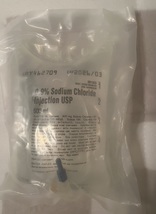 Baxter normal saline 0.9% 500ml bags sealed sterile 3/26 IV hydration added to cart.
27 available in stock
Baxter normal saline 0.9% 500ml bags sealed sterile 3/26 IV hydration added to cart.
27 available in stock
View Cart or continue shopping.
 Please wait while we finish adding this item to your cart.
Please wait while we finish adding this item to your cart.
Get an item reminder
We'll email you a link to your item now and follow up with a single reminder (if you'd like one). That's it! No spam, no hassle.
Already have an account?
Log in and add this item to your wish list.









